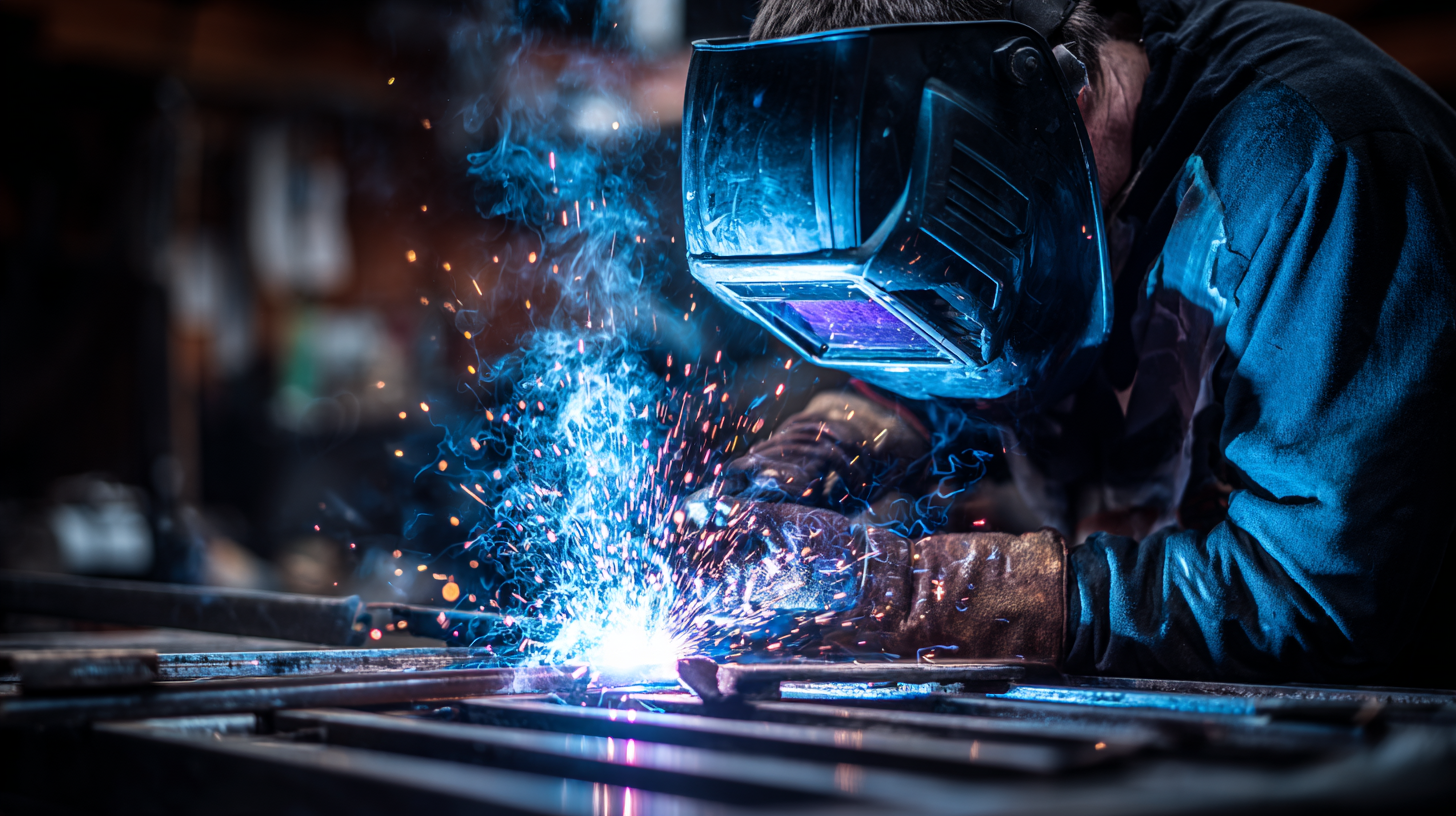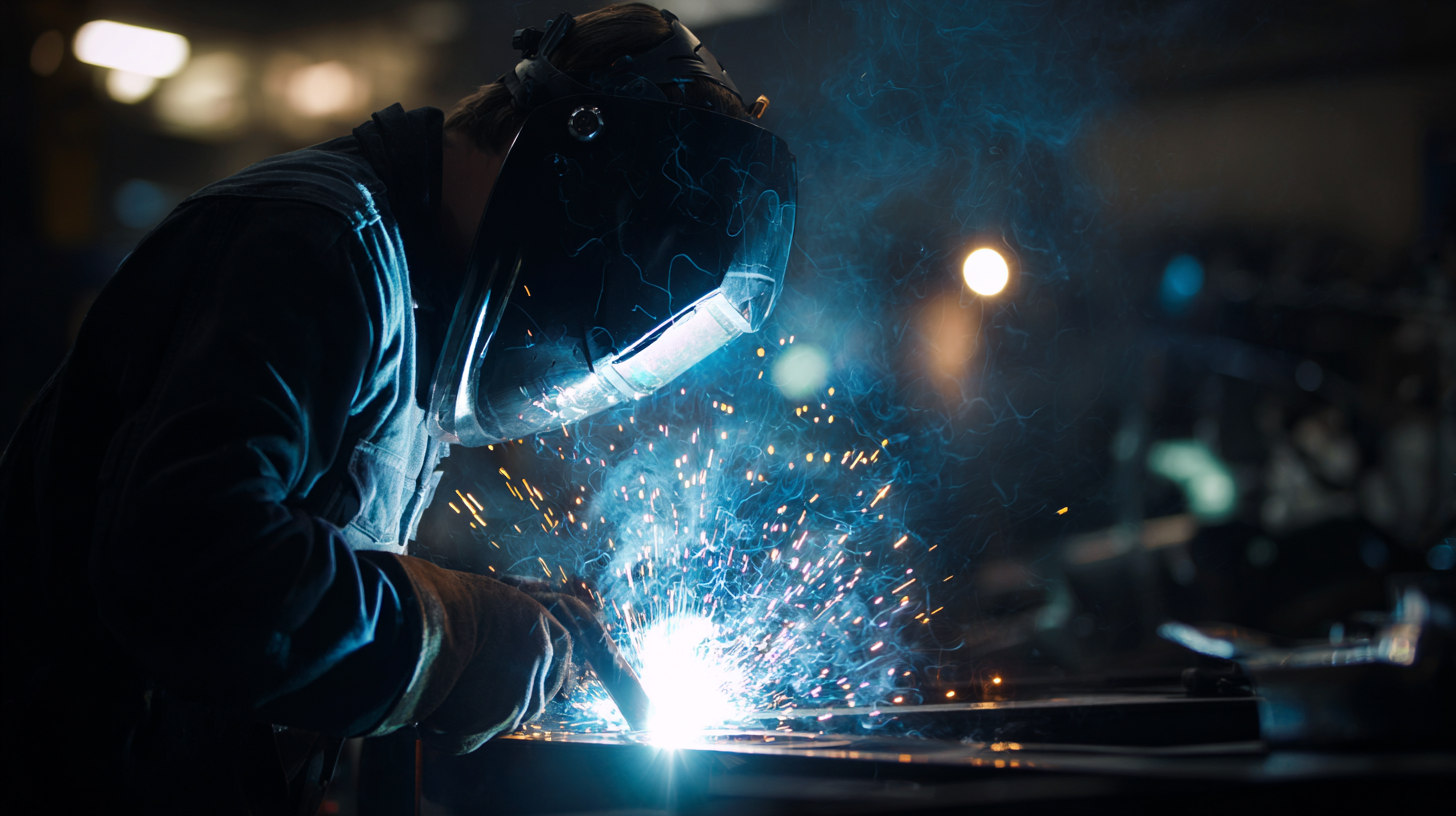In the rapidly evolving landscape of industrial welding, the Flux Core Welder has emerged as a pivotal tool that enhances productivity and efficiency in various sectors. As we look ahead to the technological trends shaping 2025, it is essential to recognize how China's top Flux Core Welders are revolutionizing the global market. With unparalleled performance, these advanced welding machines are not only streamlining processes but also pushing the boundaries of what is possible in metal fabrication and construction. This blog will delve into the innovative features and capabilities of these leading Flux Core Welders, exploring their role in fostering a new era of welding excellence. By harnessing cutting-edge technology, we can unlock superior performance and open new avenues for international trade, solidifying China’s position as a global export leader in the welding industry.

China has established itself as a leader in the global market for flux core welders, not just through technological innovation and product quality but also through exceptional after-sales service. The seamless integration of support services with high-performance welding machines ensures that customers are never left without assistance. Whether it’s troubleshooting technical issues or providing operational training, China's top manufacturers prioritize customer satisfaction by offering robust service networks.
The after-sales service advantage is particularly vital for industries where downtime can lead to significant losses. Chinese manufacturers typically provide extensive warranties and readily available spare parts, enhancing reliability and promoting customer loyalty. Moreover, many companies offer personalized support, providing tailored solutions that adapt to the specific needs of various sectors. This commitment to service excellence not only reinforces the trust between manufacturers and clients but also positions China’s flux core welders as the preferred choice for businesses aiming for superior performance.
When it comes to flux core welding, maintaining the performance of your equipment is crucial for achieving optimal results. Implementing cost-effective maintenance strategies can significantly extend the lifespan of your flux core welders while ensuring they operate at peak efficiency. Regular cleaning of the welding gun and nozzle is essential; removing spatter and debris can prevent malfunctions and improve the quality of welds. Furthermore, keeping the wire feed mechanism well-lubricated will minimize friction and reduce wear, leading to smoother operation and better welding performance.

Another vital aspect of maintenance is routine inspections. Checking for signs of wear and tear, such as damaged cables or worn contact tips, allows welders to address issues before they escalate into costly repairs. Additionally, adopting a systematic schedule for equipment servicing can pinpoint potential problems early on. Investing in training for your team on proper maintenance techniques can also further enhance their ability to keep equipment in top condition, translating to high-quality outputs and reduced downtime. By leveraging these maintenance strategies, you can ensure that your flux core welding equipment remains a powerful asset in your production line.
When it comes to maximizing performance with flux core welders, understanding the equipment is crucial. One of the key aspects of successful welding is selecting the right type of filler material. For flux core welding, using the appropriate flux cored wire can significantly impact the quality of your welds. It's important to match the wire to the metal you’re working with, and to consider factors such as position, thickness, and type of joint to achieve optimal results.
Another essential tip is to maintain a steady hand and a consistent travel speed during the welding process. Irregular movements can lead to uneven welds and compromised structural integrity. Additionally, adjusting your work angle and voltage can help increase penetration and improve bead appearance. Regularly cleaning the surface of the materials you are welding will also help in achieving better adhesion and reducing defects.
By focusing on these techniques, welders can harness the full power of flux core technology and ensure superior performance in their projects.
When it comes to flux core welding machines, understanding common repairs and troubleshooting techniques can significantly enhance their performance. Many users face issues such as improper wire feed, erratic arc stability, or excessive spatter, which can impede the quality of the weld. A frequent culprit is the wire feed mechanism, which often requires alignment or cleaning to maintain a smooth operation. Regular inspections of the drive gears and rollers can ensure that the wire feeds correctly and efficiently, preventing frustrating interruptions during projects.

Moreover, addressing electrical problems is crucial for optimal functionality. Welder overload can result in tripped circuit breakers or blown fuses, commonly triggered by insufficient cooling or accumulated dust in the machine. Cleaning the components and ensuring proper ventilation can mitigate these risks. Additionally, users should familiarize themselves with the machine's control settings, as incorrect voltage and amperage adjustments can drastically affect welding performance. By implementing these straightforward troubleshooting steps, operators can extend the lifespan of their flux core welding machines and achieve superior welds consistently.
When selecting the right flux core welder, it's essential to consider several key factors that can significantly influence performance and efficiency. According to a report by the American Welding Society, the flux-cored arc welding (FCAW) process accounts for over 30% of all industrial welding applications in the United States, highlighting its importance in modern manufacturing. The characteristics of the welder, such as voltage output, wire feed speed, and duty cycle, can greatly impact both the quality of the weld and the productivity of the operation.
Another vital aspect is the welder's capability to work with different materials and thicknesses. For instance, a study from the National Institute of Standards and Technology noted that certain high-performance flux core welders can effectively weld materials up to 1 inch thick in a single pass. This adaptability not only enhances the versatility of the welder but also ensures superior performance in various applications, whether it be in automotive repair or construction. When choosing a flux core welder, it's important to assess these specifications alongside user reviews and industry performance metrics to ensure you invest in a tool that meets your specific needs.
| Welder Model | Voltage (V) | Wire Feed Speed (IPM) | Amperage Range (A) | Weight (lbs) | Special Features |
|---|---|---|---|---|---|
| Model A | 220 | 50 | 30-200 | 39 | Dual Voltage, Digital Display |
| Model B | 120 | 40 | 25-150 | 32 | Lightweight, Automatic Feed |
| Model C | 230 | 60 | 20-180 | 45 | MIG/TIG Capability, LCD Control |
| Model D | 240 | 70 | 40-220 | 47 | Interchangeable Gun, 2-Year Warranty |
| Model E | 120 | 30 | 15-120 | 28 | Compact Design, User-Friendly |
